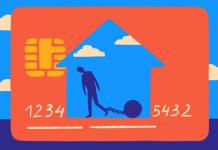The means to an end might take many forms. You can save a lot for a good vacation or quality renovation. Or take a loan and not postpone the purchase. And if you know about different strategies for repaying a loan, its repayment will go unnoticed for your family budget. We will talk about such methods.
1. Flat field strategy
- For whom: for those who are ready to allocate more money for loan repayment.
- Goal: to close all available loans evenly.
The strategy is based on the fact that all available funds are evenly distributed between loans. You make a mandatory payment plus a surcharge that is the same for all loans. If you have more free money, you divide it by the number of credits and evenly increase each payment. When one loan is closed, the released amount is distributed among the remaining ones. If loans are similar in size and maturity, they will decline slowly. But the total amount of your debt will constantly decrease.
Read also: 3 Financial Lessons Everyone Must Learn
2. Refinancing a loan
- For whom: for those who have a loan issued several years ago.
- Purpose: to pay the bank less interest.
Refinancing is a new loan that is issued to repay the old one. If you borrowed money a couple of years ago, take a close look at the market. Perhaps banks have now lowered rates, so there is an option to get a new loan on favorable terms.
It works like this; you look for loans with a lower interest rate in other banks, take out a new loan, completely repay the old one, and pay less interest. The strategy allows you to repay the debt gradually, but at the same time, have more free money for vacations and pleasant purchases.
Otkritie Bank offers to refinance an old loan on favorable terms: up to five million rubles at 8.5% per annum for the first 12 months. The preferential rate allows you to save money: after all, the system is designed so that the highest interest is paid in the first year. From the second year, the number of contributions will depend on the loan's size and the repayment period from the second yearThe. The payment amount is determined individually. Also, Otkritie does not ask for documents from another bank for refinancing.
/images/2020/01/28/payoff_personal_loans.jpg)
3. Avalanche strategy
- For whom: for holders of two or more loans.
- Goal: to quickly repay the most expensive loan.
Compare the interest rates on all your loans and choose the highest - this loan costs you the most. Begin to actively pay it off, invest all your free money, and repay only mandatory payments for the rest of the loans.
This approach will help save on interest and close the loan with the maximum overpayment as quickly as possible. The disadvantage of the strategy is that the largest loan may be the most expensive, so it will not be possible to close it quickly. But you will pay the bank less interest.
4. Snowflake strategy
- For whom: for those who sometimes have additional income.
- Purpose: to reduce the amount of debt with "random" money.
Large snowdrifts grow from small snowflakes overnight and seemingly insignificant replenishments - an impressive amount at the end of the year. This strategy is based on this principle. Not everyone has permanent free funds that can be distributed among loans.
But everyone from time to time may have unplanned income, gifts, a sudden part-time job, or 1,000 rubles from a winter jacket. Send that kind of money to pay off the loan. You yourself will not notice how one after another, these amounts will reduce the amount of debt.
Also read: 7 Financial Mistakes That Can Ruin Your Relationship
5. Snowball strategy
- For whom: for those who have a small consumer loan.
- Goal: to reduce the amount of debt.
When you sculpt a snowman, you start with a tiny ball that gradually rolls into a large ball. Here it is similar: when distributing funds between loans, choose the smallest of the loans, and promptly repay it. Don't look at rates or timing. Use all available funds to pay off the selected debt. For other loans, make only a mandatory payment.
When the small loan is closed, you will free up the money that was spent on it. Add them to the payments of the next largest loan. The last one to pay off is the largest debt, and by this time, you have the funds you spent on previous loans, so it will be much easier to close it.
Cons of the strategy - the loan size is taken into account, not the rates. So the last one may be the most expensive loan. But the number of your debts will quickly decrease.
Adapted and translated by The Cop Cart Staff
Sources: Life hacker





